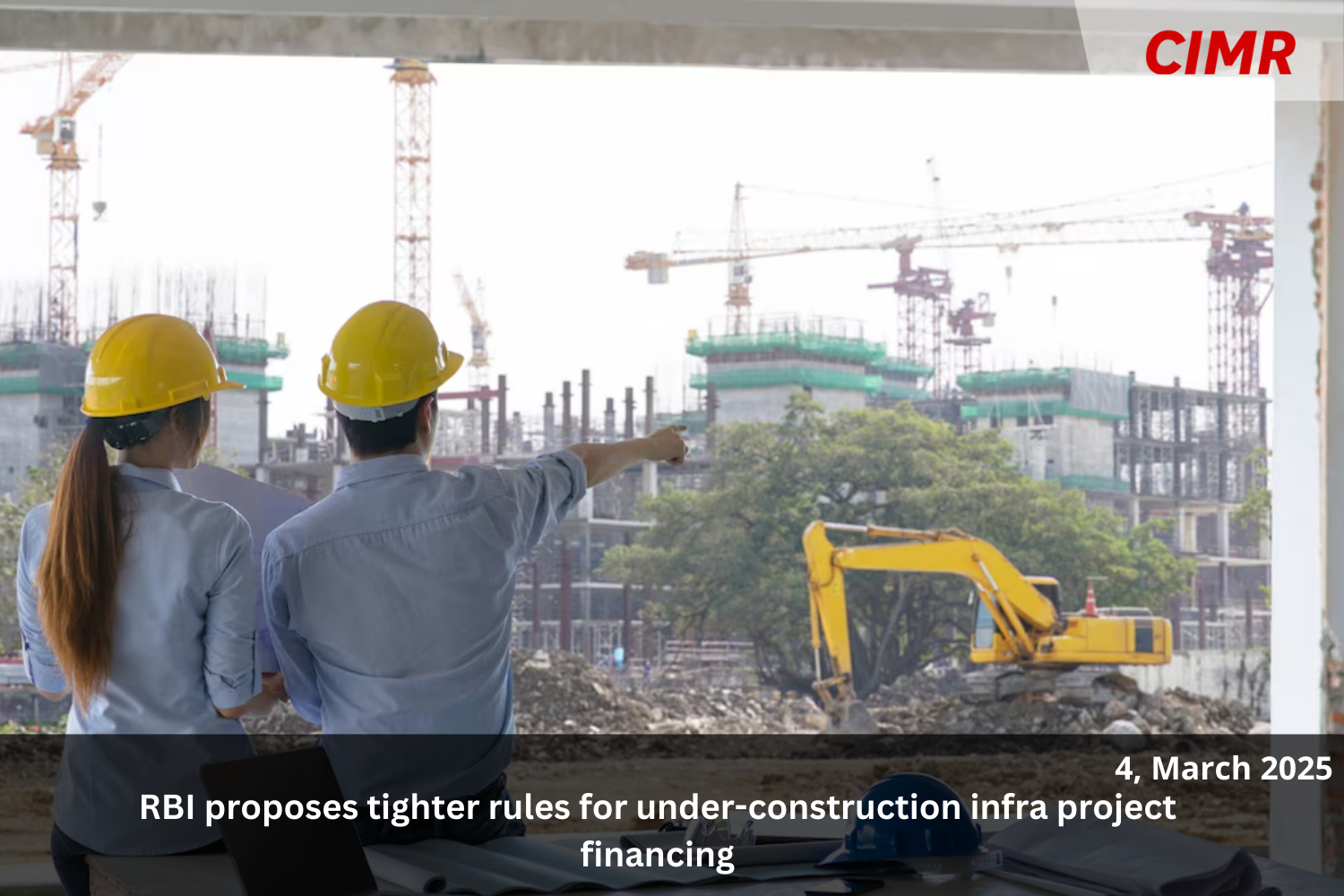On Friday, the Reserve Bank of India (RBI) recommended to lenders that they increase the amounts set aside for infrastructure projects that are still under development and requested that they maintain close oversight of any potential stress.
“Taking into account the experience of banks with regard to financing of project loans,” the RBI stated in its proposed recommendations. Due to excessive lending, Indian banks saw significant defaults on infrastructure loans beginning in 2012 and 2013, which put pressure on the nation’s financial sector.
The government of India is currently spearheading yet another wave of infrastructure projects in an effort to strengthen the country’s economy. During the project’s building phase, the RBI has suggested that banks keep aside 5% of the loan amount.
This can be lowered to 2.5% after a project is up and running, and to 1% if it begins to bring in enough money to meet the lenders’ demands for payback. A 2021 circular that can be seen on the RBI website states that project loans that were not yet past due or under stress were subject to a 0.4% provision.
Lenders should start resolution strategies well in advance and continuously monitor the accumulation of stress in projects, according to the central bank. Additionally, the regulator stated that lenders must have a minimum 10% exposure when working in a consortium to fund projects up to 15 billion rupees ($179.92 million).
According to the RBI, the floor may be set at 5% for larger projects. It requested that banks have unambiguous knowledge of when a project is anticipated to start making money and boost reserves in the event that activities are postponed.
The central bank recommended that loans for infrastructure projects should be reclassified from normal to stressed if delays exceed three years. Before completing the regulations, the RBI has asked for feedback on its ideas by June 15.
In May 2024, the Reserve Bank of India (RBI) proposed draft guidelines aimed at tightening the financing norms for under-construction infrastructure projects. This move seeks to enhance the resilience of the banking sector by addressing the inherent risks associated with long-gestation infrastructure ventures.
Key Provisions of the Draft Guidelines:
- Enhanced Provisioning Requirements: Banks are mandated to set aside higher provisions for loans extended to under-construction infrastructure projects. Specifically, a provision of 5% of the loan amount is required during the construction phase, a significant increase from the previous standard asset provisioning of 0.4%. This heightened provisioning aims to buffer banks against potential defaults during the high-risk construction period
- he provisioning requirements decrease. Upon reaching the operational phase, the provision can be reduced to 2.5% of the funded outstanding amount. Further reduction to 1% is permissible if the project demonstrates a positive net operating cash flow sufficient to cover current repayment obligations and has reduced its total long-term debt by at least 20% from the outstanding amount at the time of achieving commercial operations.
- Stringent Monitoring and Early Stress Detection: The RBI emphasizes the necessity for lenders to maintain rigorous oversight of project developments. Banks are expected to monitor the build-up of stress in projects on an ongoing basis and initiate resolution plans well in advance to mitigate potential risks.
- Maintenance of Project-Specific Data: Lenders are required to maintain project-specific data in an electronic and easily accessible format. Any changes in the parameters of a project finance loan must be updated promptly, no later than 15 days from such change.
Rationale Behind the Proposed Guidelines:
The impetus for these stricter norms stems from past experiences where exuberant lending to infrastructure projects led to significant defaults, particularly during the 2012-2013 period. These defaults strained the banking system and underscored the need for more robust risk management practices. With the government driving a new wave of infrastructure projects to stimulate economic growth, the RBI aims to ensure that banks are better equipped to handle the associated risks.
Industry Response and Potential Implications:
The proposed guidelines have elicited mixed reactions from stakeholders. While the intent to bolster the banking sector’s resilience is acknowledged, concerns have been raised about the potential impact on credit availability and project financing costs. Anil Gupta, Senior Vice President at.
ICRA, highlighted that the increased provisioning could lead to higher lending rates, potentially affecting the viability of some projects. However, he also noted that these measures could enhance the balance sheet strength of lenders by proactively addressing elevated risks associated with project delays.
The government has also expressed reservations, fearing that such stringent norms might impede credit flow to critical infrastructure sectors. In November 2024, reports indicated that the federal finance ministry had requested the RBI to reconsider or modify these guidelines to avoid restricting economic credit.
Current Status and Future Outlook:
As of February 2025, the RBI has decided to defer the implementation of these proposed regulations. This decision aims to provide banks with additional time to transition smoothly and to prevent potential disruptions in credit availability. The phased implementation approach reflects the central bank’s intent to balance the need for stringent risk management with the imperative of sustaining economic growth through infrastructure development.
In summary, the RBI’s proposed tighter rules for financing under-construction infrastructure projects underscore a proactive approach to fortify the banking sector against potential risks. While the enhanced provisioning norms aim to safeguard financial stability, the central bank remains cognizant of the need to calibrate these measures to support ongoing infrastructure development and economic expansion.
Group Media Publication
Construction, Infrastructure and Mining
General News Platforms – IHTLive.com
Entertainment News Platforms – https://anyflix.in/
Legal and Laws News Platforms – https://legalmatters.in/
Podcast Platforms – https://anyfm.in/





